Canada geese are definitely majestic to look at when they’re swimming about in ponds, however, they become quite the nuisance once they enter your yards and destroy everything you’ve worked for. Fortunately, we have gathered the best information for you to keep these geese away!
So, how to get rid of Canada geese in your yard? Use visual, auditory, and physical deterrents, and chemical or natural repellents, get a dog, install fences or barriers, let the grass grow, reduce nesting sites, and maintain a clean yard.
This article will provide you with everything you need to know about Canada geese, getting rid of them, and how to prevent them from ever coming back. Read further for more!
What Is a Canada Geese?

Characterized by their black, elongated neck and head as well as a prominent white mark located near their chins, the Canada geese (Branta canadensis) are large waterbirds with brown-gray plumage with a length of up to 110 centimeters.
Canada geese are usually spotted in flight as they move or migrate in pairs or flocks that assemble in a V formation. They reside near sources of water such as lakes, ponds, rivers, and marshes. However, they have become well-adapted to urban and suburban areas, including yards and lawns.
Canada Geese vs. Other Geese
Although it may seem difficult to tell them apart, the telltale signs are the Canada goose’s larger size, narrower necks, and distinctive plumage and markings. They are also more aggressive in nature and can become quite invasive.
Are Canada Geese Federally Protected?
Yes. They are considered migratory waterfowl. Hence, it is illegal to hurt, capture, or kill them as well as harvest their eggs and collect their feathers. This can only be done during government-approved hunting seasons or when the proper permits are acquired from local wildlife officers.
In fact, the U.S. Fish and Wildlife Service established a special permit for managing nuisance Canada geese. However, it is still recommended to use ethical and humane methods in controlling geese populations and preventing them from entering your yard.
What Causes a Canada Goose Infestation?

Canada geese tend to flock to urban and suburban residences due to the following reasons:
- Low predation risk
- Lack of waterfowl hunting pressure
- Abundance of habitats they can live in
- These areas have wide expanses of well-manicured grass that provides ideal living conditions
- Feed handouts by people near ponds or lakes
In fact, a 2010 study shows that the survival rates for giant Canada goose flocks average at 84% in Central Tennessee. This is why there is an exponential growth in the amount of geese flocks observed in urban areas.
What Kind of Damage Can Geese Cause?
Canada geese are able to cause the following problems once they deem your lawn or yard as a suitable habitat:
- Disease. Canada geese have been documented to be carriers of bacteria and parasites that may infect humans, including Camplobacter (enteritis), Toxoplasma gondii (toxoplasmosis), Legionella pneumophila (Legionnaires disease), E. Coli and Salmonella.
- Accumulation of fecal droppings. Since they tend to come in flocks, there will be a significant amount of poop in your yard, creating a foul-smelling and slippery environment.
- Contaminate water sources. If you live nearby a lake, pond, or other water sources, their fecal matter can also contaminate these. Canada geese can deteriorate water quality and cause significant amounts of aquatic animal and fish death.
- Noise pollution. Canada geese are notoriously loud honkers and it gets even worse since they come in congregations. This may disturb other residents in the urban or suburban area they flock to.
- Attacks. Although attacks are generally rare, they can cause slight injuries to small children and pets. They may be quite aggressive, especially when protecting their nests and young.
- Flight Hazard. Of the 95,000 bird-aircraft strikes that have happened in the United States since 1990, 5,300 of these involved Canada geese. Although most of these did not result in serious injuries or aircraft damage, the geese still pose a threat to takeoff and landing conditions.
Related: How to Get Rid of English Sparrows | Practical Strategies and Methods
Are Geese Bad for Your Lawn?
Yes, no matter how carefully you maintain your lawn, Canada geese are able to destroy them in just a matter of time. Aside from the reasons mentioned above, they may forage for food in your plants and grass all while trampling them, which can leave several balding and damaged patches in your yard.
Why Keep Geese Away?
Aside from the reasons mentioned above, keeping geese away is essential since they can multiply in numbers quickly and would, therefore, cause a lot of problems to humans and their surroundings.
Related: How to Keep Birds Away From Your Car? | Control and Prevention
How to Get Rid of Canada Geese in Your Yard?
1. Add a Predator Decoy
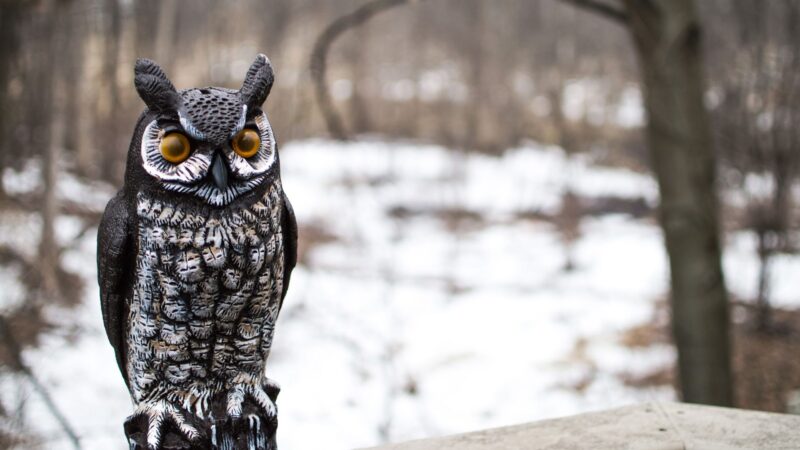
Predator decoys can elicit an immediate scared response from the geese. You can use fake wooden owls, coyotes, scarecrows, and swans. But they may quickly get used to them, so make sure to move them around to extend their effectiveness.
2. Use Auditory Deterrents
Install auditory repellents to reinforce the effectiveness of predator decoys. You can use distress call sound systems or ultrasonic sound-emitting devices. Pyrotechnics and automatic propane cannons are also good deterrents that produce loud sounds. But, they are unsuitable for residential use.
3. Apply Liquid Geese Repellent
Non-lethal chemical repellents can be used as short-term geese control. The use of methyl anthranilate is approved by the EPA. It is a compound that emits a revolting taste and smell to geese. Apply this chemical to grass and other vegetation. Make sure to use this repellent according to its label.
4. DIY Goose Repellent
If you don’t have the means to acquire chemical repellents, you can always try natural methods at home.
- Cayenne pepper: Spray a solution of dish soap, crushed cayenne pepper, and water to your turfgrass, desirable plants, and other vegetation to repel geese.
- Sugar water: Mix 5 pounds of table sugar with 2 quarts of water then heat it up until the sugar melts. Afterwards, add more water until the solution reaches 1 gallon. Apply it to your fruit plants and reapply when necessary.
5. Get a Dog
Dogs specifically trained to chase waterfowl (i.e., geese) can be used as protection for your yard or lawn. Shepherd breeds, such as German Shepherds, Australian Shepherds, and Border Collies, are the best for this job.
Depending on your situation, they can be freely running, tethered, on slip-wires, or under your control if you can properly handle them.
6. Grid Your Pond With Wire or Mesh
For pond owners, installing fences made out of wire, mesh, or wire mesh can be placed around the surrounding perimeter to prevent geese from wading into the water. This should be at least 30 inches in height with openings of up to 4 inches. You can also use plastic and nylon materials but they may not be as durable.
Related: How to Get Rid of Cattle Egrets | Humane Solutions for Pest Control
7. Grow Your Grass Taller
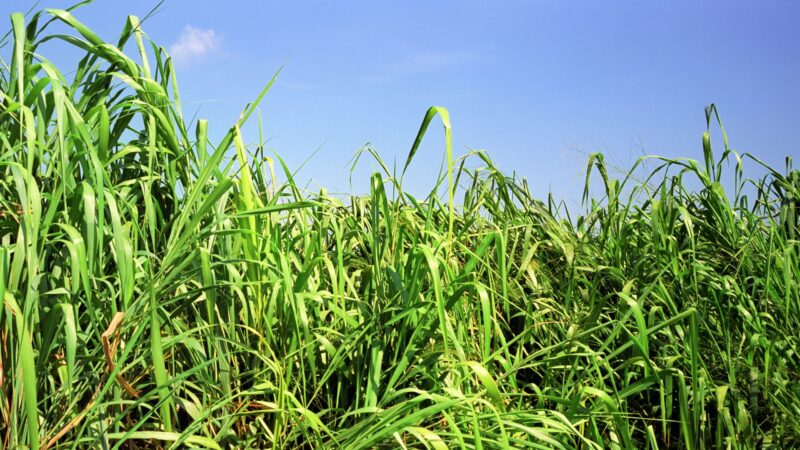
Canada geese prefer open spaces and, thus, shorter turfgrass so that they can see potential predators properly. As such, grow your grass, trees, shrubs, and other vegetation at least 8 inches high. St. Augustinegrass and centipedegrass are ideal grass types to use.
8. Install a Geese Repelling Lighthouse
A goose lighthouse produces either or both light and sound that are disruptive to geese, which discourages them from going into your lawns or yards. The light is usually solar-powered and is able to give off erratic lighting by itself.
9. Install a Motion-Activated Sprinkler
Purchase motion-activated sprinkles to trigger and project streams of water towards incoming yard or lawn intruders. Select a product that has a wide coverage, tall spray height, and has increased motion sensitivity for more effective deterring.
- SENSOR-ACTIVATED YARD SECURITY SPRINKLER - The heat and...
- DUAL-PURPOSE SPRINKLER - Our motion-activated sprinkler not only...
- ANIMAL REPELLENT OUTDOOR - Say goodbye to expensive fences and...
- TIMED WATERING FEATURE - Besides deterring animals, our sprinkler...
- Motion Activated Sprinkler: Our motion activated sprinkler serves...
- Animal Deterrent Devices Outdoor: This animal repeller is...
- Rotating Yard Sprinklers: Our rotating yard sprinklers are...
- Cat Deterrent Outdoor: Specifically designed as a cat deterrent...
- Comprehensive Sprinkler System: The comprehensive sprinkler...
- Naturally Repels – Repels nuisance animals such as birds, cats,...
- Detects & Deters – The device releases a startling surge of...
- Motion-Activated – An infrared sensor detects animal heat and...
- Multiple Settings – 4 sensitivity settings allow you to adjust...
- Eco-Friendly Design – The motion-activated repellent uses only...
10. Prevent Geese From Nesting
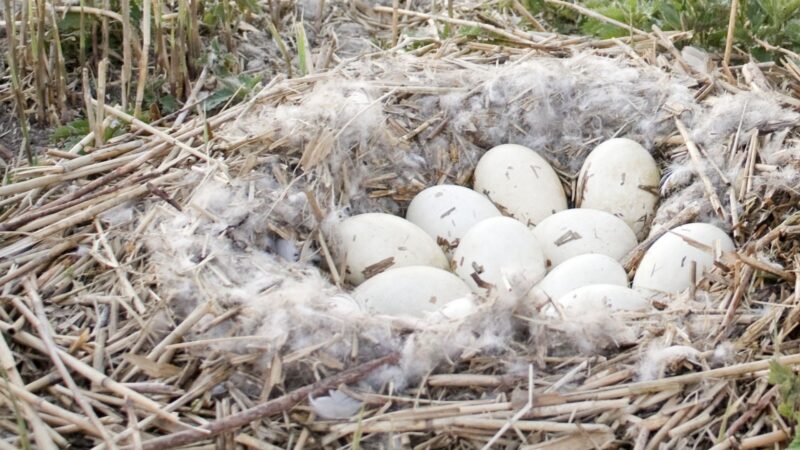
You can do so by simply letting your turfgrass grow taller and establish a durable fence around the perimeter.
Related: How to Keep Birds From Nesting on Porch? | The Effective Guide
11. Remove All Food Sources
Discard pet food and spilled seed or grain from bird feeders that the geese may be attracted to. Additionally, stop feeding geese if you have been in the first place as they will definitely come back for more.
Moreover, reduce the amount of fertilizer there is on your lawn as it may increase the quality of your turfgrass as a food source for the geese.
Related: How to Get Rid of Blackbirds From Bird Feeder? | 8 Effective Ways to Know
12. Restrict Access to Water
Block entry points to ponds, lakes, or pools using barriers and fences using durable, weather-resistant material.
13. Scare Them With Strobe Light
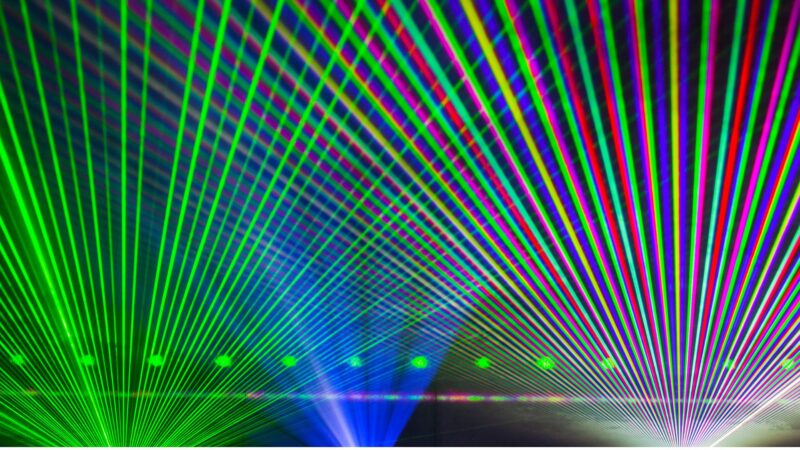
Strobe lights are able to give off bright light in random patterns that can make geese uncomfortable. Place them in your lawn or yard to discourage geese from entering.
14. Use Other Scare Devices
Other visual frightening devices you can use are reflective mylar tape, eyespot balloons, mirror or iridescent streamers, predator kites, and flags.
Related: How To Get Rid of Magpies by Scaring Them? | Tips and Guide for Keeping Them Away
How to Prevent a Canada Goose Infestation in Your Yard?
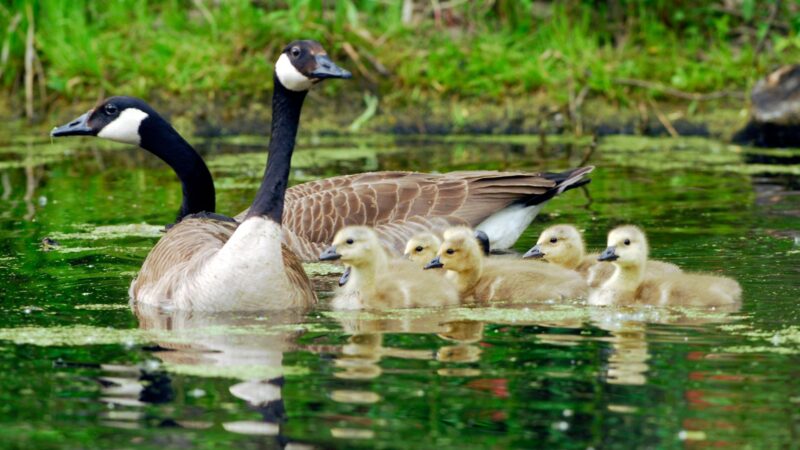
Consistently and simultaneously use a combination of visual, auditory, and physical deterrents. Additionally, regularly maintain your lawn by reducing its attractiveness from Canada geese.
List of Sources
All About Birds. (n.d.). Canada Goose.
Dunton, E. M., & Combs, D. L. (2010). Movements, habitat selection, associations, and survival of giant Canada goose broods in central Tennessee.
Higgins, S., & Guinn, S. (2009). Options for Controlling Canada Geese.
Kamm, M., & Kuss, B. (n.d) Canada Goose.
Kammin, L. (n.d.). Prevention- geese from nesting.
Lukas, S., Clark, L., Davis, A., Sanchez, D., & Brewer, L. J. (2020). Nonlethal Bird Deterrent Strategies: Methods for reducing fruit crop losses in Oregon.
- How to Get Rid of Copperheads | Practical Guide - August 27, 2023
- How to Get Rid of Corn Snakes | What Makes Them Aggressive? - August 27, 2023
- How to Get Rid of Alligators | Safety Measures and Removal Methods - July 16, 2023



